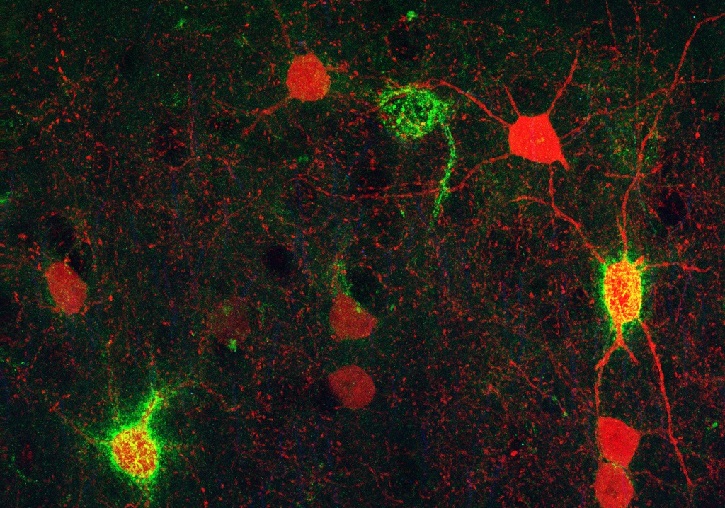The University of Valencia investigates the role of perineural networks in disorders such as schizophrenia and bipolar disorder
- Scientific Culture and Innovation Unit
- July 10th, 2020

Juan Nácher, professor at the Department of Cell Biology at the University of Valencia, has conducted research on the role of perineuronal networks (PNN) in the adult brain and their incidence in psychiatric disorders such as schizophrenia or bipolar disorder. The work, published in the Journal of Neuroscience, and in which the Research Structure BIOTECMED and the Department of Human Anatomy and Embryology of the UV have participated, as well as INCLIVA and CIBERSAM, can facilitate new diagnostic tools or treatments for these diseases.
Inhibitory neurons that express parvalbumin (PV+) are crucial for the function of the prefrontal cortex and alterations have been found in these cells in different psychiatric disorders. The development and plasticity of the connectivity of these neurons is strongly regulated by specialised regions of the extracellular matrix (the molecules that occupy the spaces between the neurons). These regions of the matrix are called perineural networks and particularly surround many PV+ neurons.
The team led by Juan Nácher, also a member of the Research Group in Psychiatry and Neurodegenerative Diseases of the INCLIVA Health Research Institute and group leader of the Centre for Biomedical Research in Mental Health Network (CIBERSAM) of the Carlos III Health Institute, has compared PV+ neurons with PNN or without PNN around. By digesting PNNs with a specific enzyme, the work has revealed that these regions of the extracellular matrix markedly influence the connectivity and function of PV+ cells in the adult prefrontal cortex.
Specifically, the inhibitory connections received by these interneurons are particularly affected by the presence of PNN. The depletion of PNNs also affects the functioning of PV+ interneurons and alters gamma activity, a dependent oscillation of these cells.
The research has studied the connectivity of PV+ neurons using immunohistochemistry and confocal microscopy. The synaptic connections these neurons receive and send have been analysed by comparing cells surrounded and not surrounded by PNN, and also by analysing the prefrontal cortex of animals that had PNN removed by a specific enzyme. Finally, the function of these cells has been evaluated by studying the electrical brain rhythms in which they are involved.
The research findings, with the alterations of the PNN in the brain of psychiatric patients that Vicent Teruel, professor at the Department of Human Anatomy and Embryology at the University of Valencia, have pointed out have been relevant for understanding the behaviour of these networks.
Article:
Héctor Carceller, Ramón Guirado, Edna Ripollés-Campos, Vicent Teruel-Martí and Juan Nácher: «Perineuronal Nets Regulate the Inhibitory Perisomatic Input onto Parvalbumin Interneurons and γ Activity in the Prefrontal Cortex». Journal of Neuroscience 24 June 2020, 40 (26) 5008-5018; DOI: https://doi.org/10.1523/JNEUROSCI.0291-20.2020
Link: https://www.jneurosci.org/content/40/26/5008
















